This post may contain affiliate links. If you make a purchase through a link, I may receive a small commission, at no cost to you. These commissions help keep this website up and running, and I thank you for your support. Read my full disclosure here.
Disclaimer: This is not a sponsored post, I paid for this trip myself. All recommendations and opinions are my own.
When I was planning my holiday to Poland and decided to visit Auschwitz, some people asked me “why do you want to visit a concentration camp?” For me, the answer was simple. Regardless of whether you have any personal connection to the Holocaust, it’s an important piece of humanities history that we must always remember, and do everything possible to never repeat. We shouldn’t try to ignore or forget what happened just because it makes us uncomfortable.
Having studied history at school in the relatively ‘new’ country of New Zealand, I never got the opportunity to go on any historical school trips since Europe is so far away. Now, as an adult living in Europe, I enjoy taking the opportunity to finally see things with my own eyes. Visiting Auschwitz gave me the opportunity to learn more about what really happened to the Jewish people during the Holocaust.
Our visit fell over the Easter period, of which I came to learn is a very popular time to visit Poland, including Auschwitz. I thought that I would be able to simply book our tickets online, however, I soon discovered that most tickets are bought out by tour groups, leaving a limited supply of single tickets available. Their new online booking system made it even more confusing. Despite attempting to book tickets in advance online, they were already sold out on the two dates that we had available to visit (Auschwitz is closed on Easter Sunday). Via chat rooms I discovered that our only options were to either join a tour or arrive super early to line up and hope that we may be able to get one of the limited tickets available on an English tour. As we really didn’t want to miss out, we ended up booking a tour.
I don’t usually join tours, not because I’m against them, it’s just that it is usually much cheaper to go it alone. Also, I prefer to sight see on my own schedule rather than sticking to someone else’s, especially if I’m enjoying a location and decide I want to spend more time there. But the tour was only for a day, and didn’t cost very much. However, if you do plan to go it alone, I’ve added some details about how to get to Auschwitz by public transport in the ‘Practical Tips’ section at the bottom of this post.
In the end I was glad that we had made the decision to join a tour because prior to our visit we met an American at the Wieliczka Salt Mine who told us that she had left Krakow at 6.40am to line up at Auschwitz in the hope of getting a ticket. Although she did eventually manage to get in, we were relieved to have arranged a tour, as her experience had sounded stressful.
We booked our English speaking tour with Krakville tours who offered a reasonably priced 7hr tour of Auschwitz and Birkenau. We were scheduled to leave Krakow at 11:15am (the tour requests you arrive at your meeting point 15mins early). In the morning we grabbed some food to take with us, as you only get short breaks on the tour (for information about the food options available at Auschwitz-Birkenau Memorial and Museum, see my ‘Practical Tips’ section at the bottom of this post).
Finding our meeting point was easy as it was in the main tourist area. Our guide led us on a short walk to where the buses were parked (as the buses can’t park at the meeting point in the old town area). The buses were clean and comfortable. Auschwitz is about 70km (about 45miles) from Krakow, so it took us about an hour to get there by bus. Just before we arrived, our guide explained to us about the strict security rules. You can’t bring in bags larger than A4 size and you will need to pass through security and have your bag searched. For a small fee you can place your bag in the onsite luggage check.
Once we arrived at Auschwitz we had 15 minutes free time, so we visited the small onsite bookshop. There are a variety of books in different languages to choose from. See my suggested readings at the bottom of this post.
Once we were through security, we were introduced to our guide and given a headset so we could more easily hear him. We entered Auschwitz through the gates with the words ‘Arbeit macht frei’ or ‘work sets you free’. The sign is a replica because the original was stolen, then recovered, and now sits securely in storage.
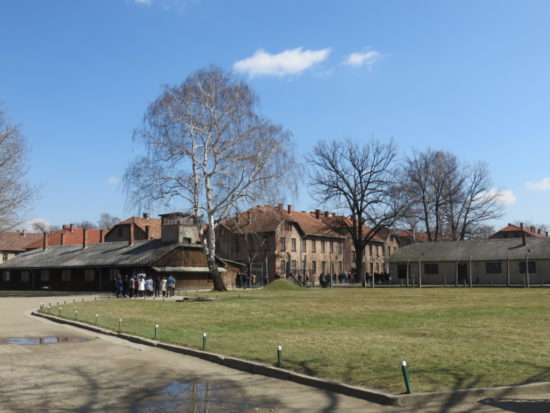

Our guide led us through the old bunkers which have been converted into exhibitions. The tour began by explaining how this concentration camp was originally set up. The camp is huge, the entire area covers a total area of 191 hectares (472 acres), so on your tour you only see the main parts. Polish people were living on this land until the Nazi’s occupied the area and evicted them from their homes in order to create this extermination camp. On this site is:
- Auschwitz I which is the original concentration camp that we visit on this tour
- Auschwitz II – Known as Birkenau it is the second camp we visited on our tour. It operated as both a concentration and extermination camp
- Auschwitz III – Monowitz was a labour camp to staff an IG Farben factory but it was destroyed. There were 45 satellite camps.
Originally Auschwitz I was created to hold Polish political prisoners and the first extermination of prisoners took place in September 1941. Then from early 1942 until late 1944, transport trains delivered Jews to the camp’s gas chambers from all over German-occupied Europe, where they were killed en masse. Their journey to the camp was terrible. They were transported in cattle freight cars so tightly packed that they were forced to stand. During their long journeys, sometimes taking many days, they only had one bucket for all to use as a toilet and they were not given any food or fresh air. Many died along the way.
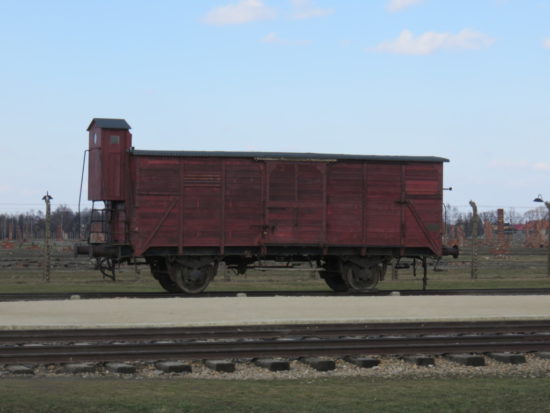
When they arrived at the camp they were put into two groups, the first were those deemed ‘fit to work’, and the second group were those deemed ‘not fit to work’ which included the elderly, disabled, children, mothers that would not be separated from their children and pregnant women. This group were sent off to be killed in the gas chambers. The prisoners did not know their fate when they arrived and were told they had to strip naked and have their hair cut off in order to be decontaminated. They lined up for what they believed was a shower, but was actually the gas chamber. Once they were killed, their bodies were searched for valuables (e.g. gold teeth removed) then the bodies were taken to be cremated.

We were led into a room with piles of cans that contained the cyanide-based poison Zyklon B that was used to kill the prisoners in the gas chambers. From there we were led through rooms of personal items that were stripped from the prisoners as soon as they arrived including a huge tangle of wire rimmed spectacles, piles of artificial limbs, enamelware, suitcases, and shoes. Of course, these are only a small fraction of what was taken as much of it was shipped to Germany to be reused by the Germans. There were photos on the walls which helped to give you an idea of what it was like. There were large numbers of prisoners whose job it was to sort all the belongings.
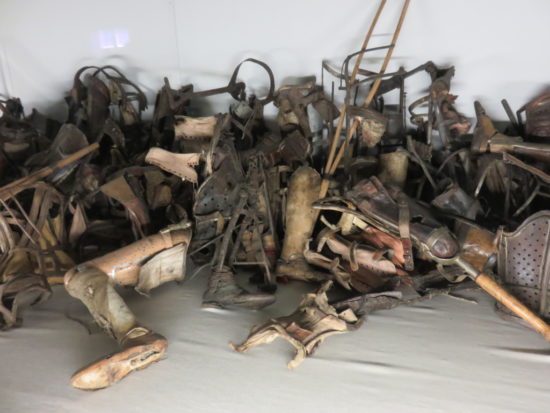
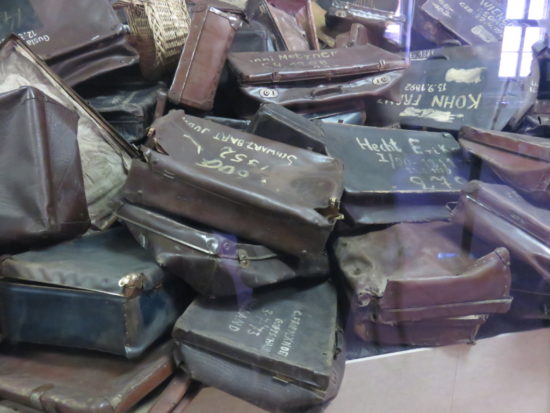

One of the most memorable rooms for me was the one that contained hair from the prisoners. This room was one in which you could not take photos out of respect. As I mentioned earlier, when the prisoners arrived, they had all their hair, including body hair, cut off. This hair was sold to be used in the industrial process including felting and upholstery.
We were then taken into the bunkers where some of the prisoners lived. There, we got to see photos of the prisoners which included men, women and children, most of which died during their time at the camp. Our guide told us of the living conditions, the crammed and uncomfortable the rooms, the lack of food, and the hard labour they were forced to carry out. Consequently, people did not live very long. Those that died whilst out labouring had to be carried back by their fellow prisoners at the end of the day.
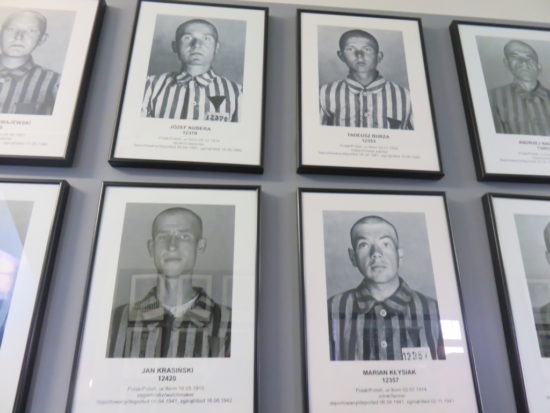
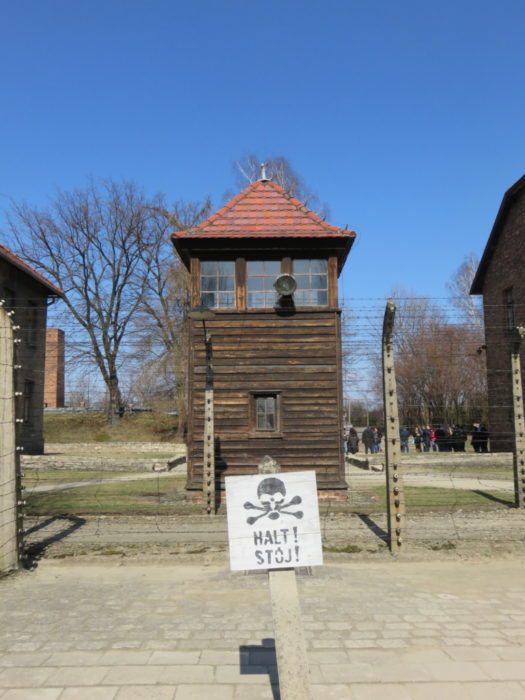
There were photos of the survivors which showed how emaciated their bodies were. There were also pictures drawn by the artist Zinovy Senderovich Tolkachyov who arrived at Auschwitz camp in late January of 1945. These drawings give you some idea of what that camp looked like back then. Tolkachyov arrived at the camp only a few hours after the Red Army and felt it was his duty to record everything he saw and heard. Apparently, these pictures were used as evidence for the prosecution of Nazi’s during the Nuremberg trials.
We were then taken into the bunker where Soviet and Polish prisoners, both men and women, were held. There were areas that we were not allowed to take photos of, including the standing cells where prisoners were forced to stand for hours on end. We were also shown the death wall where the prisoners were executed.
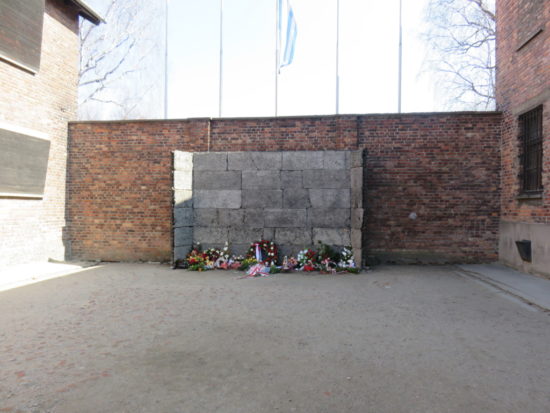
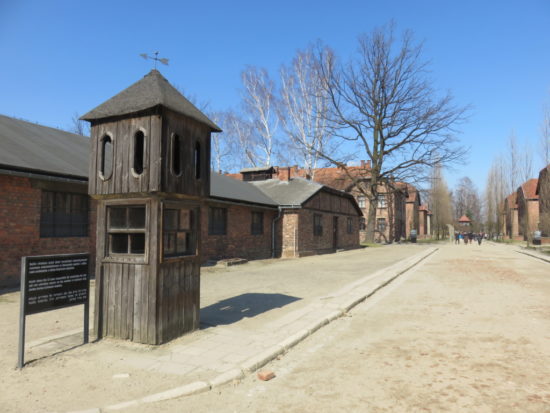
Our group was then led outside, past the area where they hanged the prisoners, and the home where the camp commandant Rudolf Höss lived. After the war he was arrested and put on trial for his role in the mass killings. He was convicted of murder, returned to Auschwitz and hanged at the site of his crimes on 16 April 1947. Unfortunately, doctor Josef Mengele, known as the “Angel of Death” who performed cruel experiments on prisoners including children, was never brought to justice as he fled and eventually died of a stroke whilst swimming on the Brazilian coast.
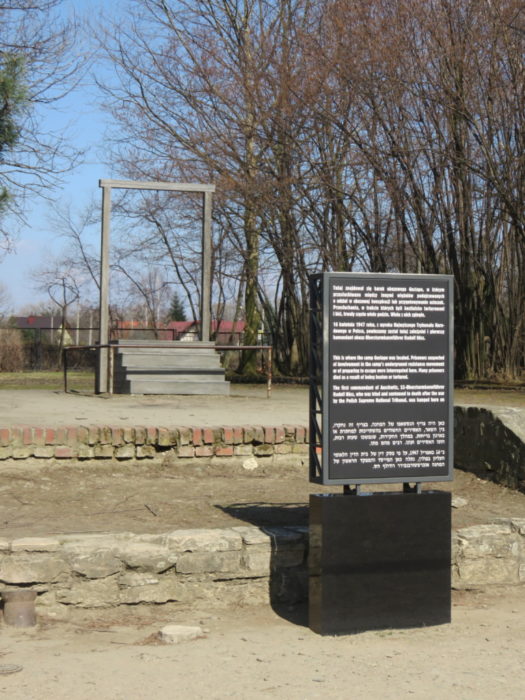
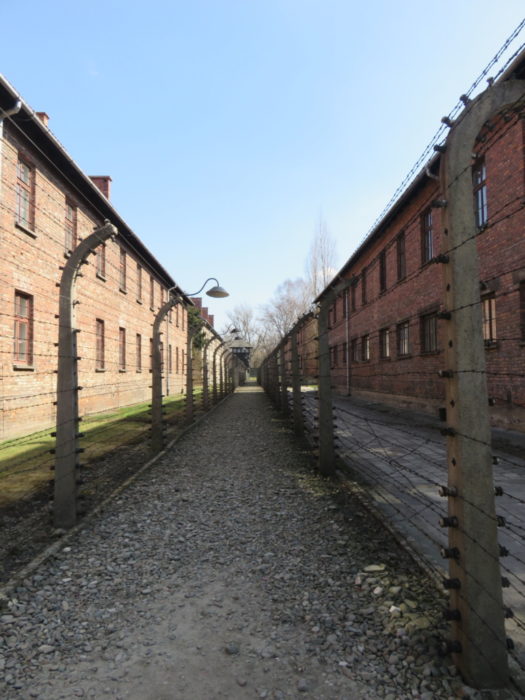
Finally, we were taken to visit the crematorium which I decided not to take a photo of out of respect for the people that were cremated here. An estimated 1.3 million people were sent to this camp, of whom at least 1.1 million died. Around 90 percent of those were Jews. Others included 150,000 Poles, 23,000 Romani and Sinti, 15,000 Soviet prisoners of war, 400 Jehovah’s Witnesses, and tens of thousands of others of diverse nationalities, including an unknown number of homosexuals.
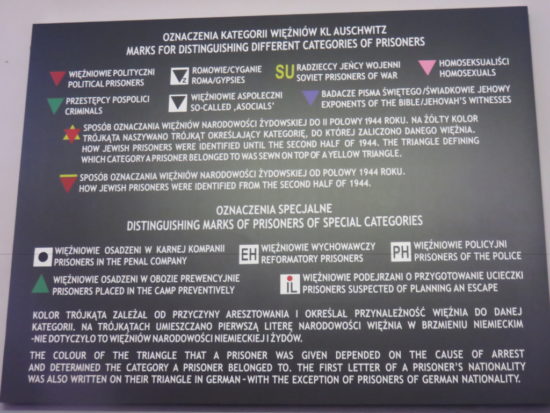
That was the end of our tour around Auschwitz, and we were given a short break before being driven to nearby Birkenau. There is a shuttle bus that runs between these camps for those of you not part of a tour group. Birkenau is much quieter, as many people just visit Auschwitz and don’t go onto to visit Birkenau. However, if you have time, then I recommend it as this is where the trains stopped and where the work camps were located. This place is huge and unlike Auschwitz, you don’t have to join a tour here, you can just roam freely.

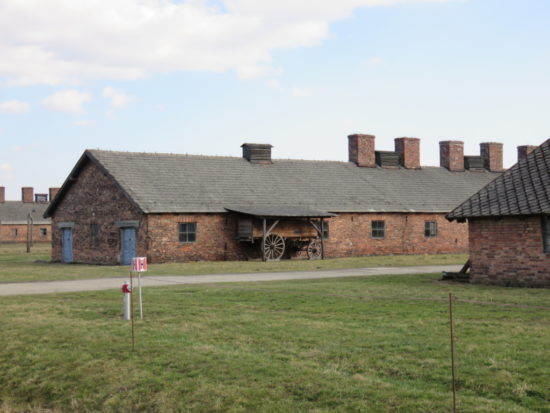
Here you will see lots of barracks where prisoners lived, many of which are now in ruins. We were taken to see the remains of the gas chambers which the Germans burnt down when the Soviets came to free the camp at the end of the war. The Germans did their best to destroy any evidence of what they had done and also burnt many of the records.
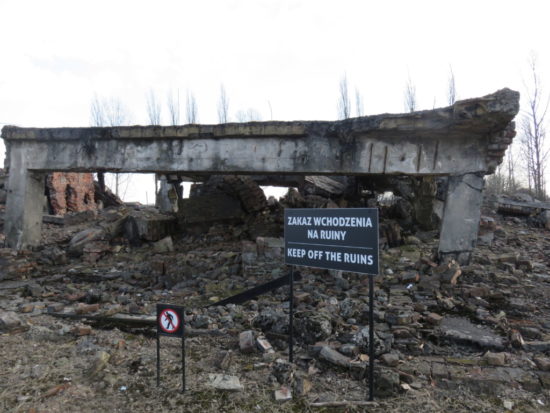
We were taken to barracks that held women that were considered ‘no longer fit to work’. These women had to await their deaths in the gas chambers without food or water, sometimes for several days. The barracks were very basic. With bunks 3 high, 10 women were expected to squeeze into each level. After the tour we had some free time before getting back on the bus, so we went to look at some of the other barracks. They must have been extremely cold in the winter.
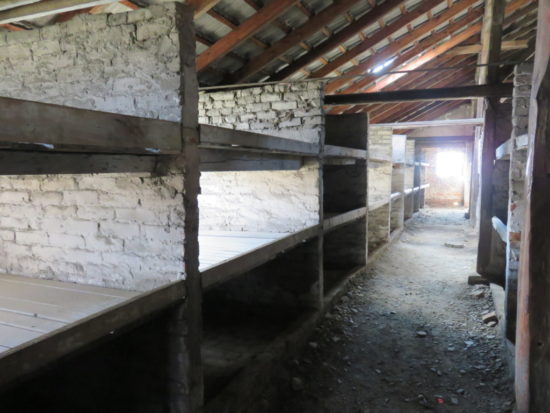
I found this a challenging post to write, as I found it difficult to find the right words to describe the horrific acts that occurred here and the sadness that I felt. Although this was an emotionally exhausting day, I am very glad we visited. I also highly recommend taking a guided tour so you can hear the stories behind this haunting place. Finally, I would like to leave you with a quote from philosopher, poet, and novelist, George Santayana:
“Those who do not remember the past are condemned to repeat it”
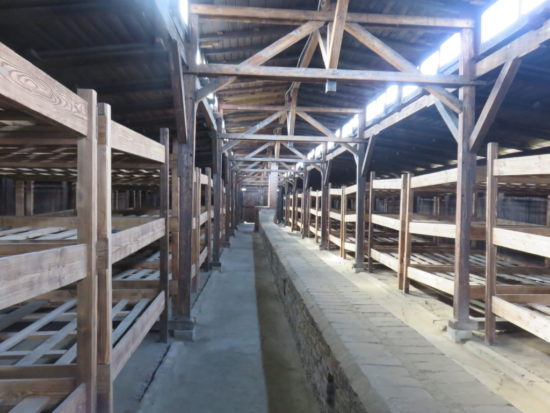
Recommended Reading
If you are keen to learn more, then read survivors’ accounts of living in Auschwitz-Birkenau. I recommend the following books.
- If This Is a Man by Primo Levi (titled Survival in Auschwitz in the USA) Levi was an Italian Jewish chemist, writer, and Holocaust survivor. If This Is a Man is Levi’s account of the year he spent as a prisoner in the Auschwitz concentration camp. The average life expectancy of a new entrant at the camp was three to four months. Of the 650 Italian Jews in his transport, Levi was one of twenty who left the camps alive.
- Night by Elie Wiesel Born in what is now Romania, Elie Wiesel was a teenager when he and his family were taken from their home in 1944 and deported to the Auschwitz concentration camp, and then to Buchenwald. Night is the terrifying record of Wiesel’s memories of the death of his family, the death of his own innocence.
- Mans Search For Meaning: The classic tribute to hope from the Holocaust by Viktor E Frankl Before the war Viktor Frankl was a prominent Viennese psychiatrist. During his time in Auschwitz he observed the way that both he and others in Auschwitz coped (or didn’t) with the experience. He noticed that it was the men who comforted others and gave away their last piece of bread who survived the longest. The sort of person the concentration camp prisoner became was the result of an inner decision and not of camp influences alone. Frankl came to believe man’s deepest desire is to search for meaning and purpose. This outstanding work helps us all to find significance in the art of living.
- Born Survivors by Wendy Holden My work colleague lent this book to me, so I’m currently in the middle of reading this harrowing true story of three concentration camp prisoners Priska, Rachel, and Anka. These three women arrive at Auschwitz, where pregnant women are sent straight to the gas chambers. However, they conceal their pregnancy from the infamous Nazi doctor Josef Mengele and live in daily fear of their pregnancies being detected by the SS. They are forced to work and almost starve to death. This is a remarkable account of their survival as well as their babies.
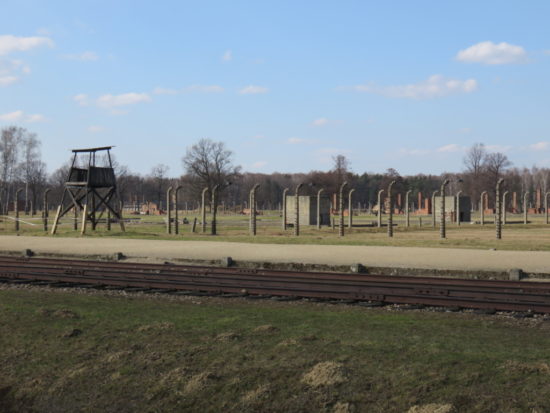
Practical tips for visiting the Auschwitz-Birkenau Memorial and Museum
- How to get to Auschwitz from Krakow
- By bus: The bus connections to Auschwitz/Oswiecim have their bus depots at Dworzec MDA (MDA Station), which is situated in Bosacka street, just behind the Main Railway Station of Krakow. They take about 1.5-1.75hrs then you will need to walk about 10minutes from the bus stop to Auschwitz. You can purchase your tickets at any of the ticket machines by the tram stops or the kiosks or from the machine on the bus. Don’t forget to validate your ticket once on board the bus.
- By train: Take the direct train from Krakow main station. Purchase your tickets from the ticket machines at the station. The trip takes about 1.75hrs and then there is a 15-20min walk from the train station to Auschwitz.
- By car: Auschwitz is about 70km (about 45miles) from Krakow. It takes about an hour to drive there. There are paid car parks at both Auschwitz and Birkenau.
- By tour: Taking a day tour from Krakow to Auschwitz is the easiest option with the fastest travel times. Tours don’t cost very much and are an excellent option as you will be taken on a guided tour. We went with Krakville tours. There are a range of tours available in a wide variety of languages, just make sure you correctly book one in your language. You can also book a combined tour that includes a trip to Wieliczka Salt Mine.
- Getting between Auschwitz and Birkenau camps: A free museum shuttle bus drives between the camps. Departures between April – October is every 10 minutes and between November – March every 30 minutes.
- How long should I spend visiting the Auschwitz-Birkenau Memorial and Museum? Our tour left at 11.15am and we got back at about 6.30pm, so I think you need to put aside an entire day. Don’t forget, if you travel by public transport your travel time will be longer.
- What to wear: Unless you are visiting during summer, then be prepared for the cold. The museum bunkers in Auschwitz are heated, but Birkenau is particularly cold as it is very exposed. Wear comfortable walking shoes (warm and waterproof if visiting in the colder months). You will be on your feet most of the day.
- Toilets: Unfortunately, you must pay to use the toilets. They charge 2 zloty per use, so make sure you take some coins with you.
- Food: Lunch is not provided on this tour, so make sure you take a picnic lunch. You can’t eat inside the museum, but there are seating areas outside in the car park. There are booths selling snacks onsite, and an onsite restaurant selling basic food. There are also restaurants in the surrounding area (walking distance), but note that we visited over the Easter weekend and the restaurants were closed. If you are visiting on this tour, you only get short breaks so there would not be time to visit a restaurant. It is important to note that out of respect, you cannot eat whilst visiting either Auschwitz or Birkenau, but there are seats and tables in the car park area where you can eat.
- Museum rules: Please be respectful and follow these rules.
- Bag size: You will need to pass through security to visit Auschwitz and they are very strict about bag size. Your bag can be no larger than an A4 piece of paper (210mm x 297mm). If you are on a tour, then you may be able to leave your items on the bus (don’t risk leaving valuables), otherwise, you will need to pay to check your bag in which is cheap at about 5 zloty.
- Photography: There are areas that you cannot take photos. Your guide will point these out to you, but there are also signs advising you. Please don’t take selfies at any time.
- Eating and drinking: Out of respect, you can’t eat, drink, or smoke whilst on the tour at the museum. However, there are some bench seats around the car park where you can eat.
- Language: Polish. Although most people we came across in restaurants and tourist sites spoke some English, do try your hand at a few Polish words:
Yes = Tak (tahk)
No = Nie (nee-eh)
Please = Prosze (proh-sheh)
Thank you = Dziekuje (jink-wee-ah)
Hello = Czesc (cheshked) - Currency: Polish złoty
- Tipping: Not required, but people usually round up.
- Electricity: The electrical current is 230 volts, 50 Hz. Wall outlets generally take the European two round prong plugs. However, you are better off purchasing a
worldwide adaptor that can be used in Poland as well other countries. At least then you can potentially get some further use out of it on future vacations. If you’re taking a number of electronics with you, then I would recommend purchasing a couple of these adaptors.
- Navigating: We used Google’s free Offline Maps. Google Offline Maps allows you to access free maps for navigating that can be used offline i.e. you don’t need WIFI, data, or roaming to be able to use them. Make sure you download a map to use when you find yourself without internet.
- Using your phone as a GPS will drain your battery quickly, so use a
portable battery charger which you can use to charge your phone and any other USB chargeable devices.
- Using your phone as a GPS will drain your battery quickly, so use a

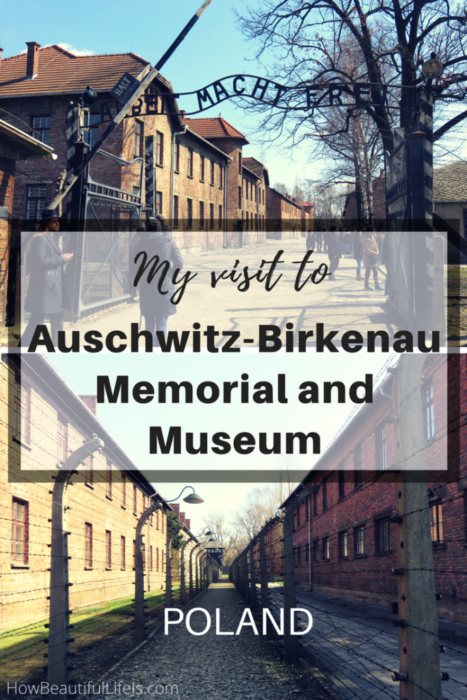



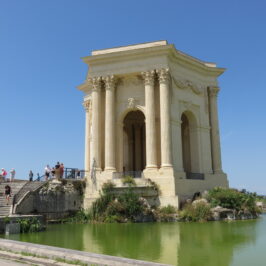
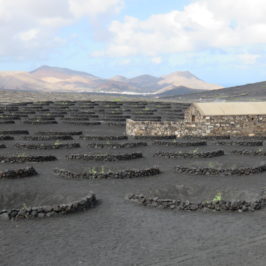



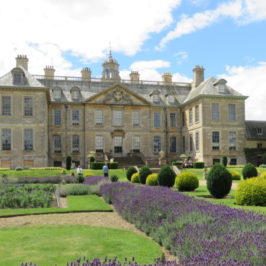
Leave a Reply